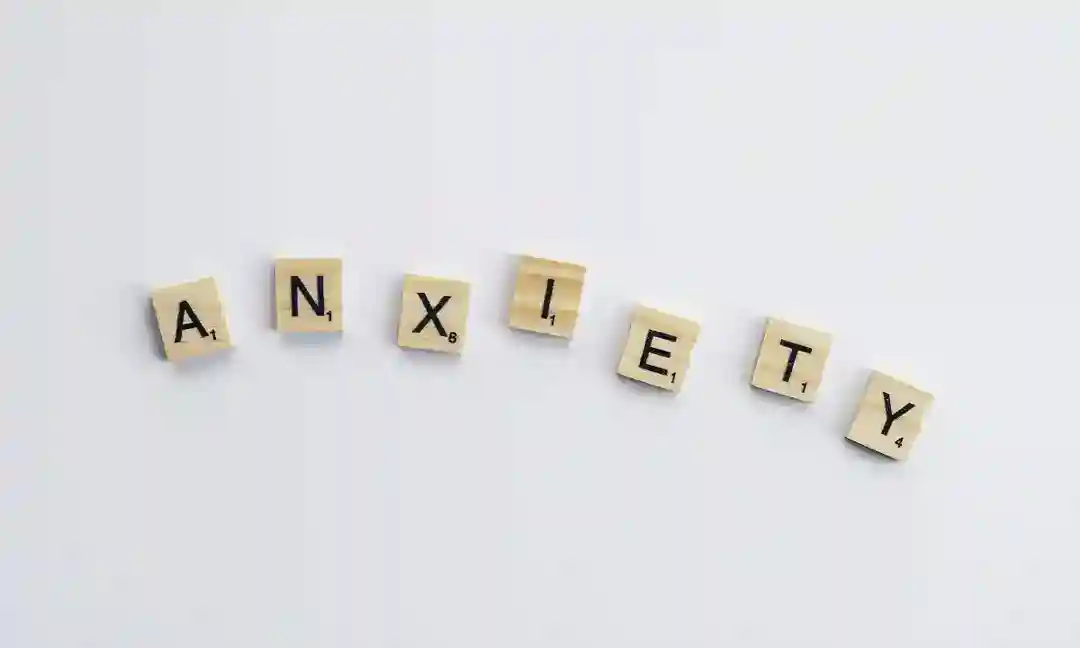Understanding Selective Mutism: A Comprehensive Guide

Breaking the Silence: Understanding and Overcoming Selective Mutism
Selectively silence the tongue that dares not speak. A prisoner of fear, it silently screams. This is selective mutism, a mental health condition that turns the most mundane social interactions into a battlefield. But its not just shyness or timidity its an anxiety disorder that can leave lasting scars if left untreated. Selective mutism or sm is a condition where the fear or anxiety of speaking in certain situations becomes overwhelming. Its not about being shy or bashful its about being unable to speak due to the crippling anxiety that comes with it. This condition usually affects young children but it can also affect adolescents and adults. Its more than just a phase; its a serious mental health issue that needs to be addressed. Sm is an anxiety disorder and like all anxiety disorders it can overlap with other conditions. It can also have lingering effects later in life if not treated promptly. There is an early identification and treatment for selective mutism. So the sooner a condition is recognized the better chance it has of recovering. So lets talk about the selective mutism. Help those who are voiceless to find their words again.

What is Selective Mutism, and How Can It Affect You or Your Child?
Selectively silent, yet profoundly present, selective mutism (sm) is a rare condition that affects less than 1% of people across all age groups. It often begins in childhood, typically around age 5, and comes to attention soon after a child starts preschool, kindergarten, or grade school. Its less common but still possible in teenagers and adults. The prevalence of sm seems to have a gender bias, affecting women and people assigned female at birth (afab) about twice as often as men and people assigned male at birth (amab). However this disparity may be skewed due to bias or stereotypes about how talkative people should be based on their sex assigned at birth. Further research is necessary to determine if this disparity is accurate. Sm is especially rare in adults despite its rarity. You might recognize the symptoms of it in yourself or you might recognize them in your child or a child you care for. Everyone with a diagnosis can benefit from treatment regardless of age.

What is Selective Mutism and How Can It Impact Your Life?
Selective mutism is a condition where a person consistently finds talking difficult or impossible in uncomfortable situations despite having no trouble talking in comfortable situations. This is not a willful or deliberate choice not to talk but rather an autopilot response to feelings of fear or anxiety. The symptoms of selective mutism can take different forms such as a total or near-total inability to communicate nonverbal communication or minimal or reduced communication. Total or near-total inability to communicate can manifest in various ways, such as feeling unable to speak, tense or stiff posture, a deer in the headlights or blank expression, avoiding eye contact, avoiding social interactions, not asking for things wanted or needed, and behaving disruptively to avoid talking. Nonverbal communication may involve using widely understood sounds or other noises instead of words using nonverbal communication to avoid talking or using gestures or other movements rather than words. Minimal or reduced communication can include slowed responses, using single-word responses or very short sentences, mumbling, stuttering or whispering, and changing ones voice. The causes of selective mutism are not fully understood but several possible factors may contribute to it including other mental health conditions such as social anxiety disorder phobias other anxiety disorders autism spectrum disorder separation anxiety and post-traumatic stress disorder . Anxiety disorders can run in families due to family history or genetics. Some other communication disorders such as speech disorders or auditory processing disorders can also contribute to the development of selective mutism. Additionally certain social circumstances such as being bullied experiencing traumatic events or abuse family problems or immigrating to a place with a different primary language may increase the likelihood of developing selective mutism.

Unraveling the Enigma of Selective Mutism: A Silent Struggle to Speak
Selective mutism a condition that causes an individual to remain silent in certain situations can have far-reaching implications on ones life. As the inability to communicate in certain settings can hinder the formation and maintenance of relationships it can lead to social difficulties loneliness and isolation. Furthermore selective mutism can also pave the way for the development of other anxiety-related conditions or symptoms as the constant struggle to communicate can take a toll on an individuals mental health. Additionally the inability to express oneself can hinder progress and success in these areas.

How Can a Mental Health Provider Diagnose Selective Mutism?
To diagnose selective mutism a mental health provider such as a psychiatrist or a psychologist is typically involved. Other professionals like speech-language pathologists or speech therapists may also be part of the diagnostic process to rule out other conditions. The diagnosis is based on symptoms and behaviors and the provider will ask questions about your experiences and factors that could contribute to this condition. The psychiatric associations diagnostic and statistical manual of mental disorders fifth edition text revision dsm-5 includes five criteria for diagnosing selective mutism. You must consistently not talk in social situations where its expected but have no trouble talking in other situations. Not talking must affect your social educational or work life or any combination of the three. The inability to talk must last longer than one month. Not talking isnt because you have trouble speaking or understanding the main language others are using. Finally, your difficulty talking isnt because of another communication disorder like stuttering, and it isnt only happening in connection with autism spectrum disorder, schizophrenia spectrum disorders, or other conditions that involve psychosis.

Can Comprehensive Therapy Silence Selective Mutism?
Selective mutism a complex and multifaceted disorder requires a comprehensive approach to management and treatment. The primary goal of therapy is to reduce the severity and frequency of symptoms and with early intervention some individuals may experience a complete remission of symptoms. The most common treatment approaches include medication speech therapy and mental health therapy. Mental health therapy particularly cognitive behavioral therapy cbt is the first line of treatment for selective mutism. This form of therapy helps individuals understand and cope with anxiety and other distressing feelings that contribute to sm symptoms. It also helps in modifying tantrums or other disruptive behaviors that may accompany sm. For children it is essential that the parental figures are involved in the therapy process as they can significantly contribute to the success of mental health therapy. Speed therapy is another crucial component of selective mutism treatment especially when sm occurs alongside speech disorders. Working with a speech therapist or specialized healthcare professional can help improve communication skills and address any underlying speech issues that may be exacerbating sm symptoms. In some cases medications may be prescribed as part of the treatment plan for selective mutism particularly if mental health or speech therapy are not effective on their own. The most common medications used to treat sm are selective-serotonin reuptake inhibitors ssris which primarily treat depression but can also be effective in treating anxiety-related disorders including . Other medications may also be beneficial and healthcare providers can offer guidance on the most appropriate medication options and potential side effects. It is essential to note that each individuals response to treatment for selective mutism can vary and it may take time to find the most effective combination of therapies. With patience, persistence, and the support of healthcare professionals, it is possible to manage and treat selective mutism, improving the quality of life for those affected by this disorder.

How to Overcome Selective Mutism: Breaking the Silence and Embracing Life
How can i prevent selective mutism in children?. Sm isnt preventable. Experts dont fully understand what factors can contribute to or cause it so there is no way to reduce the odds of it happening. What can i expect if my child has sm?. In children, sm can affect how they do in school, socialize and make friends. It can also cause children to avoid talking even when it is important. If you have sm as an adult it can still have negative effects. Sm can keep you from making friends or developing relationships (social, work, romantic, etc.). It can also affect how you do at school or at work. How long does selective mutism last?. For many people the symptoms seem to disappear by adulthood. The symptoms can still be there but they shift and look more like another anxiety disorder especially social anxiety disorder. Tell me the outlook for selective mutism?. The outlook for sm is good overall, especially with early diagnosis and treatment. When diagnosed and treated in early childhood most people with sm can overcome or learn to cope with it so that it doesnt affect their lives as much or at all. When sm goes undetected or untreated the outlook is less positive. It is not dangerous but the negative effects can be significant. People with sm often experience depression and anxiety. Some people struggle with social situations and feel lonely or isolated. It can also affect their educational career and other important parts of their lives.

How to Support Your Child with Selective Mutism: Breaking the Silence and Embracing Life
When living with a child who has selective mutism sm it can be challenging but its crucial to understand that this is a mental health condition that your child doesnt have control over. Its essential to control your reactions to their condition and its symptoms. Start by creating a comfortable and safe environment for your child, avoiding situations that might make them feel afraid or anxious. Do not discuss their issue in front of them as this can lead to feelings of embarrassment or increased anxiety. Reducing fear and anxiety is key so begin with communication methods your child is comfortable with and encourage them to gradually become more comfortable in social situations. Its also vital to be patient and give your child time to talk as speaking for them can reinforce their fear and anxiety about talking. Make sure they know that its okay to pause and think before responding. Give praise to your child when he or she talks and reward their actions. This will help them understand that their talking has a positive impact. Avoid using punishment as a motivator as it can increase their fear and anxiety making it even harder for them to talk.

Silencing the Fear: Understanding and Overcoming Selective Mutism
Selective mutism is a condition that makes a person unable to talk in certain situations because of fear or anxiety. Its likely to start in childhood around school age but can also affect teens and adults. Its important to remember that children who have it arent being disobedient or stubborn and sm isnt something they can control by themselves. Sm triggers are situations or circumstances that make it likely that someone with sm wont talk. Some common examples include feeling as if others are standing too close or intruding on personal space, others talking loudly or behaving aggressively or strictly, people who are unfamiliar or are strangers, physical characteristics of others, like people who are very tall or imposing, nonverbal cues or behaviors, like anxious behavior patterns, or unfriendly or negative nonverbal cues, crowded or loud spaces, places that have connections to unhappy or unpleasant memories, never-before-visited places, situations that are totally new or that your child has an unsuccessful past experience with. The above list is just some of the more common triggers. Some people may have specific triggers that arent like those listed above. Triggers can also shift and change over time. No autism spectrum disorder sm and sm are separate conditions and experts group them into separate categories. Autistic people however are more likely to have sm.